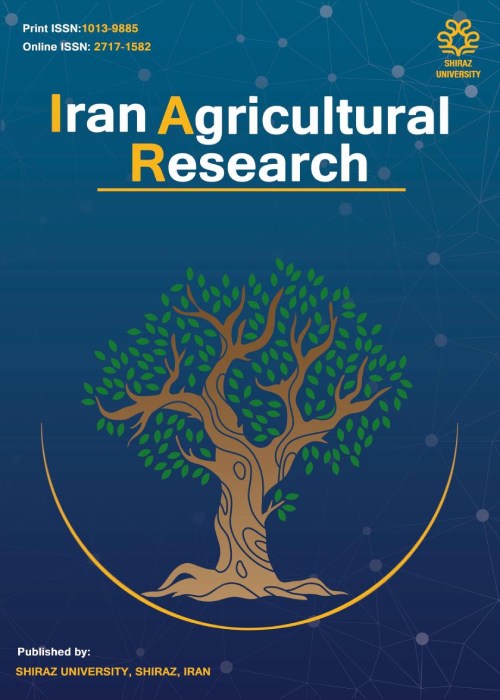The influence of sugarcane mulch on sand dune stabilization in Khuzestan, the southwest of Iran
Author(s):
Abstract:
Over the past 50 years, oil mulching has been a common technique for sand dune stabilization in the southwest of Iran (Khuzestan province). However, concerns over the release of heavy metals from oil mulching have led to the search for alternative mulches that are capable of stabilizing sand dunes without environmental hazards. This study investigates the feasibility of using sugarcane residues for producing environment-friendly mulches. Dunder, Press Mud, and clay soil from the surrounding area near the sand dunes were used to make sugarcane mulches for comparison with the traditional oil mulch. A sand dune was selected as a sample bed for applying the mulch. To select the proper ingredients and treatments, Dunder, Press Mud, and clay soil were mixed with water by a trial-and-error method. The selected batch mix was then used to make the desired mulch and sprayed on a sand dune bed. Shear strength of surface soil (SSS), penetration resistance (PR), soil surface shear resistance (SSR), and erodibility of selected treatments were measured by the shear torvane, hand penetrometer, Zhang’s surface shear device, and the wind tunnel. The treatments were arranged in a factorial experiment within a completely random design with the factors including mulch type (seven sugarcane mulches and one traditional oil mulch), thickness (1 or 2 layers), and rainfall (rain and no rain). The results indicate that SSS and PR increased with mulch thickness; the average values of SSS and PR obtained with the two-layer treatments were 1.27‒1.33 and 1.13‒1.15 times as great as the single-layer treatments. Increasing fraction of sugarcane residues significantly increased the SSS and PR. Higher concentrations of organic matter, CaCO3, and electrolyte in the sugarcane mulches may have helped the bonding of soil particles and increased the SSS and PR. However, the oil mulch had the lowest SSS but the highest PR. This might be due to the lower viscosity of oil mulch that allows it to penetrate sand dunes more easily than sugarcane mulches do.
Language:
English
Published:
Iran Agricultural Research, Volume:34 Issue: 2, Summer and Autumn 2015
Pages:
71 to 80
magiran.com/p1498973
دانلود و مطالعه متن این مقاله با یکی از روشهای زیر امکان پذیر است:
اشتراک شخصی
با عضویت و پرداخت آنلاین حق اشتراک یکساله به مبلغ 1,390,000ريال میتوانید 70 عنوان مطلب دانلود کنید!
اشتراک سازمانی
به کتابخانه دانشگاه یا محل کار خود پیشنهاد کنید تا اشتراک سازمانی این پایگاه را برای دسترسی نامحدود همه کاربران به متن مطالب تهیه نمایند!
توجه!
- حق عضویت دریافتی صرف حمایت از نشریات عضو و نگهداری، تکمیل و توسعه مگیران میشود.
- پرداخت حق اشتراک و دانلود مقالات اجازه بازنشر آن در سایر رسانههای چاپی و دیجیتال را به کاربر نمیدهد.
In order to view content subscription is required
Personal subscription
Subscribe magiran.com for 70 € euros via PayPal and download 70 articles during a year.
Organization subscription
Please contact us to subscribe your university or library for unlimited access!


